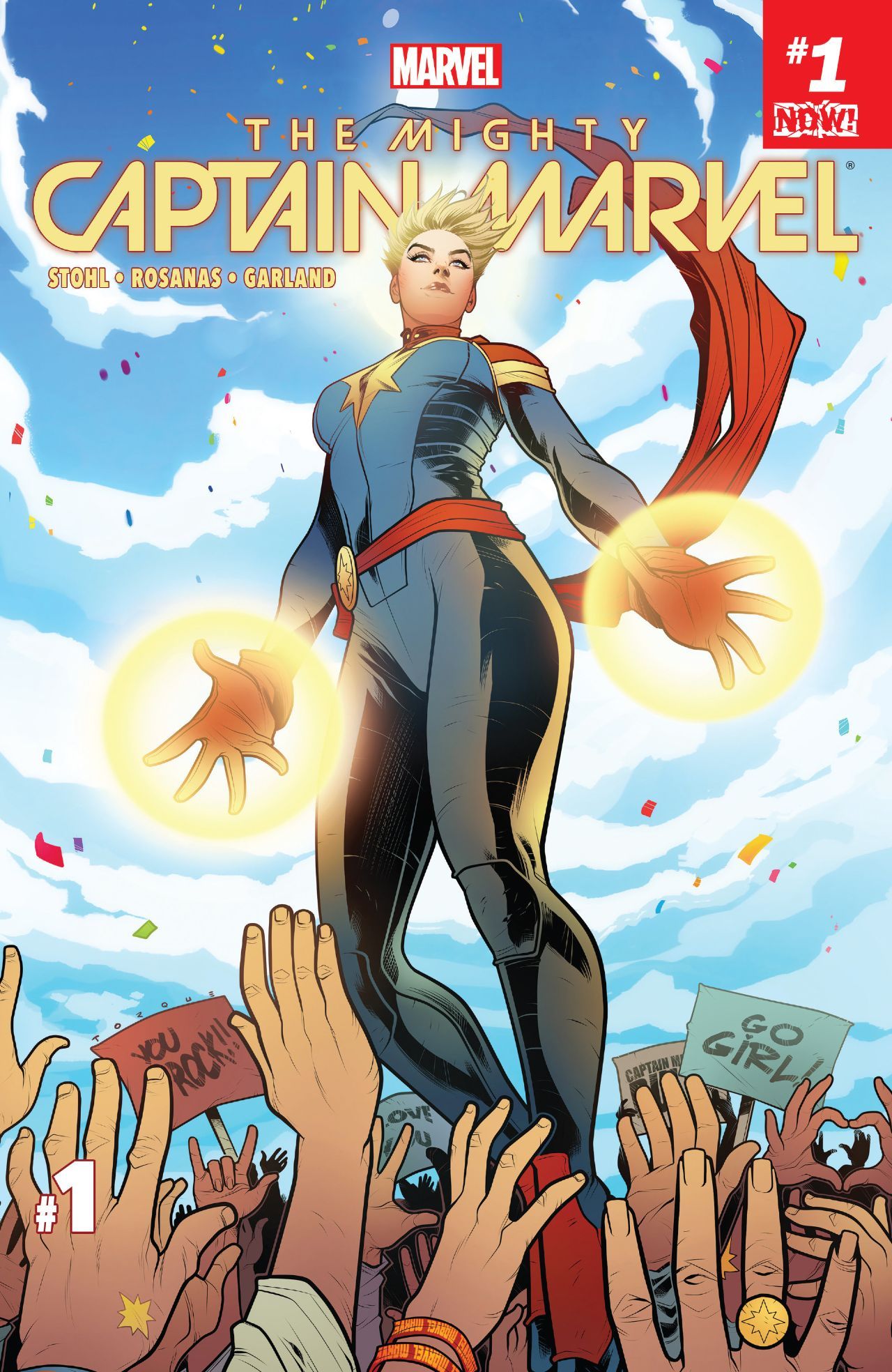The Mighty Captain Marvel #1
- WRITER
- Margaret Stohl
- Artist
- Ramon Rosanas
- Letterer
- VC's Joe Caramagna
- Cover Artist
- Paulo Siqueira, Skottie Young, Elizabeth Torque, Alex Ross, Frank D'Armata, Jenny Frison
- Publisher
- Marvel Comics
- Price
- 3.99
- Release Date
- 2017-01-18
- Colorist
- Michael Garland
Following "Civil War II," Carol Danvers has been plagued with problems, both professionally and personally, and writer Margaret Stohl, artist Ramon Rosanas and colorist Michael Garland have set a focused course to get Captain Marvel back on her feet.
No challenge is too great for the former Air Force pilot-turned-superhero, and Carol Danvers has come a long way since an incident with alien technology left her with amazing powers. Part-Kree, part-human, Carol is now the most powerful and popular hero on Earth. From the Alpha Flight space station miles above the planet, Captain Marvel and her crew defend the world from intergalactic threats. Now, as an alien refugee crisis hits Earth, Carol and company face a new kind of threat -- one they can't punch their way out of. Unfortunately a crisis of this scope needs the funding to match, and Carol is forced to oversee a television show based on her life.
Our hero finds herself frustrated with shallow dialogue, unnecessary bared skin and a director intent on capitalizing on the more trivial aspects of her life while visiting the set of "Cap'n Marvel." Margaret Stohl captures a humanity to Carol in these early panels, building a personality that we can relate to, such as a Beyoncé ringtone, a cool fashion sense, and a playful friendship with Jessica Drew. It's a mere page or two before Carol is called away to handle business at one of the refugee camps, stopping the kidnapping of a Kree child by a rogue Army Ranger who is more than they seem. Whether the draping of a UN flag across the shoulders of an alien was Stohl's work or Rosana's, it was a touching moment, relevant to issues in real life.
This is the part in the story where Rosana's art really took the spotlight. His clean lines focus on the costumes and mesh well with the dialogue, flowing from Carol's costume change from civilian to hero to the quick scuffle with the shape-shifting Army Ranger to the more dialogue heavy pages aboard the Alpha Flight space station. Michael Garland sticks with the colors of Captain Marvel's uniform through most of the issue, relying on rosy hues, sunny yellows, and blue tones to make the line art and story pop all the more.
As the issue closes, Carol takes the child to the space station where she has a meeting with a governing board made up of other established heroes, who seem to serve the sole purpose of keeping her in check. Where "Civil War II" had Captain Marvel acting out of character, this feels like a welcome change. If there's only one thing to take away from this issue, it's that Stohl's characterizations and personalities are top notch.
The issue as a whole feels slightly graceless in that there is a lot happening all at once, but it shows a ton of promise as it deals with contemporary issues in a loving way. "The Mighty Captain Marvel" reads like a love letter to the character, and builds upon the foundation of Captain Marvel herself, while spinning a unique series for both new and longtime fans of the hero.
From the looks of things, we will be seeing a lot of identity parallels as Captain Marvel refocuses and finds herself with both a shape-shifter using her likeness, and a television show skewering it for commercial consumption. The creative team is careful to not overwrite recent history or give us another introduction to a character we've grown to love, but instead give Carol a goal and focus to help sharpen the character for the latest readers joining the Carol Corps. While this first issue didn't leave as strong of an impression as December's issue #0, there's tons in store for those of us who pick up this series.
"The Mighty Captain Marvel" #1 is on sale now. Issue #2 is on sale this week, Feb. 22.

